Rakuten Fashion Week Tokyo S/S 2026 - Part 1
Yokogao’s FWT Diary
ANCELLM│© JFWO
Not long ago we came back from Rakuten Tokyo Fashion Week. We’ve been covering the event for a while from a distance, yet we are familiar with most of the unique and outstanding brands that present their new collections on their runways each season. However, experiencing it up close and personal is a different story; not only does each garment acquire a new meaning just by the mere act of seeing it in real life, but also being part of the context of the fashion event, feeling the vibe and discovering new sides of Tokyo as we jump from one show venue to the other is completely something else. Lasting six days and with a lot of things constantly happening, here we share with you how we lived each one of them, what we saw, where we went and how we felt.
Check out our coverage of the final 3 days of FWT here.
Day 1
The immense Shibuya Hikarie building is the home of Rakuten Fashion Week, housing around half of the shows. Every fashion week handles its locations differently; some are scattered all over the city, while others pick only one permanent venue. Here they blended both concepts, having an official centre of operations but also allowing brands to pick their own sites, which let us, the invitees, have the best of both worlds. The Hikarie building is standing tall and proud in the heart of Tokyo, in Shibuya, right next to the also massive Shibuya Scramble Square, but being way more calm and less crowded than it. There's space for everything: multiple floors filled with concept and boutique stores, some others for restaurants and cafes, and a couple more at the top of the tower—with an incredible view of the Shibuya crossing—are where the shows happen. There has rarely been a fashion show venue more convenient than this one.
Here the six days of runways started with mukcyen, the young brand led by Yuka Kimura, a whole Gen Z representative name on her own, that, after winning the top prize for the JFW Next Brand Award 2026, had the honour of holding her first show ever as the opening act of this season. The dark and apocalyptic collection was inspired by that viral prophecy of an alleged catastrophic earthquake happening in Japan around July of this year, as found in an old manga that seemed to already predict some events in a similar way. This had the internet in a buzz, with people even cancelling and rescheduling flights. I would be lying if I said it didn't cross my mind while booking my trip for fashion week, half jokingly, half seriously. In the end nothing happened, and we are all safe and sound, but the collection gave us the taste of doomsday happening at any time, with everyday pieces transformed in a dramatic way.
mukcyen│© JFWO
The other two shows of the day were held in different parts of the city. Någonstans presented its colourful collection full of vibrant shades and landscape prints, all inspired by designer Mizuki Ueda's love for nature, in the Brillia Running Stadium, a 60m athletic track with a focus on accessibility for para-athletes and Japan's first large-scale ETFE structure, located in Ariake, Koto City. The architectural nature of the venue, blended with the sportiness brought by the running track and the green and peaceful surroundings, were all ideal elements to surround a collection where construction, athleisure and nature were the main elements.
Någonstans│© JFWO
To conclude the first day, we came back from the peripheral area of Koto to the centric Shinjuku, specifically to the 212 m tall Shinjuku Sumitomo Building, or the Triangle, which in its very, very spacious lobby hosted the collection created by Kazuya Yamachika for his brand ANCELLM. A proposal as sharp as the geometrical edges of the building, all the looks were incredibly well constructed yet held a nonchalant element to them. They appeared as garments that have been worn constantly, therefore adapting comfortably and confidently to the wearer, showing traces of ageing and use—a true manifesto of a successful design that fulfils its purpose of being used through and through. Japanese designers excel at this: making everyday, wearable, fashionable but comfortable pieces of the best quality, and ANCELLM was proof of that.
ANCELLM│© JFWO
Day 2
Out of the three Japanese-designed brands that presented their collections during this day, only the last one did at Hikarie, which was always a good place to end. There's nothing better than clocking out of work and finding yourself in the middle of Shibuya at night, probably the best time of the day to enjoy it. Resuming with the chronological order of our journey, HUMMEL 00, the Japanese brand we were already familiar with, held a very meta show/installation/movie/presentation at Studio Earth, a large space of approximately 500 m² and a ceiling height of 7.3 m, which came in handy for the brand. Hanging their pieces from it, all of them floated on top of our heads, creating a new and immersive angle to appreciate the sportswear-inspired designs imagined by Morikawa Masanori, who also presented a conceptual movie, Human Anatomy, and a hanging sculpture of two bodies, one on top of the other.
This Studio Earth surprised us with its location, right at the foot, literal foot, of the Tokyo Tower, the representative city silhouette that doesn't need any introduction. Seemingly integrating sightseeing into the fashion schedule will always be a big yes. By getting to know the city, you understand better the context where the concepts, garments and ideas are born. In between shows and during the transfers, you see how the locals dress, how they move and where they go; you slowly fill in the gaps of information and connect the dots in your mental map, allowing for a better appreciation of what's being shown on the runway. This reflection grew deeper as days went by.
HUMMEL 00│© JFWO
We jump from one staple of Tokyo to another, the Telecom Centre Building, also in Koto City, for a brand we were looking forward to: HARUNOBUMURATA. The sophisticated nature of its completely crystal and quadrangular shape was an ideal scenery for the presentation of Haruno’s newest collections, elevating the sense of luxury and elegance that always surrounds all of his creations. With a subtle inspiration on the grandeur of nature, the pieces showcased a wide exploration of material and textures, recurring to handcraft by local artisans to present tasteful and frankly beautiful pieces, like degrade organza tops made up of more than fifty layers of the material or fringed skirts that moved as if they were part of a forest. The circular runway in such a spacious venue, mixed with how easily the pieces seem to flow and float, made it all feel like a breath of fresh air in the middle of a manmade structure.
HARUNOBUMURATA│© JFWO
After driving back to Hikarie for Yoshiokubo, the last stop of the day, we were received by something completely unexpected that quickly became one of the highlights of the fashion week. Suddenly we were not entering a fashion show but a Red Bull breakdance competition. It had it all: the live mixes by DJ Mar Ski, the vibrant crowd work by Olympic breaking commentator KENTARAW, the benches in a square distribution just like in any event of this style, and some of the best breakdancers of Japan facing in a two-team battle, all wearing the brand pieces. All of this was happening while the usual models walked around the squared cypher. This simple but effective idea gave us what we love: seeing garments in movement, seeing how they adapt to the body rather than the other way around and seeing how they were well thought out both in concepts and style and in comfort and ergonomics. The energy was high, the battle was on fire and the clothes were great. This last show had it all.
Day 3
Japanese brand Haute Mode Hirata presented a very deeply personal show, celebrating the 100th anniversary of the birth of its founder, the late Akio Hirata. Reimagining completely the Hall A of the Hikarie Building by creating a sort of spiral shaped by the disposition of the seats of the audience, the Hirata daughters and son presented a collection of 31 hats paying homage to their father. The designs at times were closer to looking like a sculpture or an object rather than a wearable piece—with some of them following a similar shape and flow as the venue, but all of them being completely usable. The headpieces were accompanied by looks created for the occasion by young designers like Ryunosuke Okazaki, Takuya Isagawa of Mister It., and Tatsuya Tamada of Tamme. The audience was taking each look with care, and the ambiance felt emotional and celebratory of a life dedicated to the craft and the new legacy being created, holding high the Hirata name.
Mode Hirata│© JFWO
The following show was one of the favourites of the season by everyone we talked to, and we also agree on the sentiment. Pillings, the brand led by Ryota Murakami chose to present their new collection at Sazagy League, in a very, very tight room, where the audience and even the photographers were all cramped next to each other, all of us dangerously close to the space designated for the models to walk. In the end this was the best decision they could make, because we could witness from up close every detail and every choice made for each piece. Portraying something as mundane as going to the supermarket and taking the careless attitude we dress for the occasion with, Pillings recreated intentionally the beauty of the unintentional, finding depth in wearing the clothes in the wrong way or not worrying about combining the pieces perfectly but creating something that with its casualness feels comfortable, cosy and completely human.
Pillings│© JFWO
This whole day we stayed around the area, going back and forth to different parts of Shibuya, with the last stop being the Yoyogi 2nd National Gymnasium for Fetico (by R)’s show. The two gymnastics complexes were conceived for the 1964 Tokyo Olympics by the renowned Japanese architect Kenzo Tange, the man behind some other highly important constructions like the Tokyo Metropolitan Government Building or Tokyo’s St Mary’s Cathedral. And while such a sporty venue didn't match in our heads with the idea we have of Fetico, the space was utilised in a different way than expected, taking only the court part and placing a big white box in its perimeter, with the show being confined to those four walls, all the rest filled with red lights. An interesting choice for such a place.
The collection was inspired by two women—artist Rebecca Horn and photographer Irina Ionesco—in various ways, but the biggest focus and subject was the feminine depth. Tangled and meshed inside this concept, we can find infinite ways to describe and define women, and Emi Funayama used garments, from the most intimate ones like lingerie to outerwear and everything in between, to reflect how inside the female body inhabits power and softness, loud voices and delicate whispers. The “by R” part of the name is added as part of a Rakuten Group Inc. project that aims to invigorate the Japanese market by supporting both domestic and international brands. Previous collaborations have included global names such as PAUL SMITH and marimekko. Here in Tokyo and in Japan, there’s talent, and there’s support. No wonder why the outcome is always charged with meaning.
FETICO│© JFWO

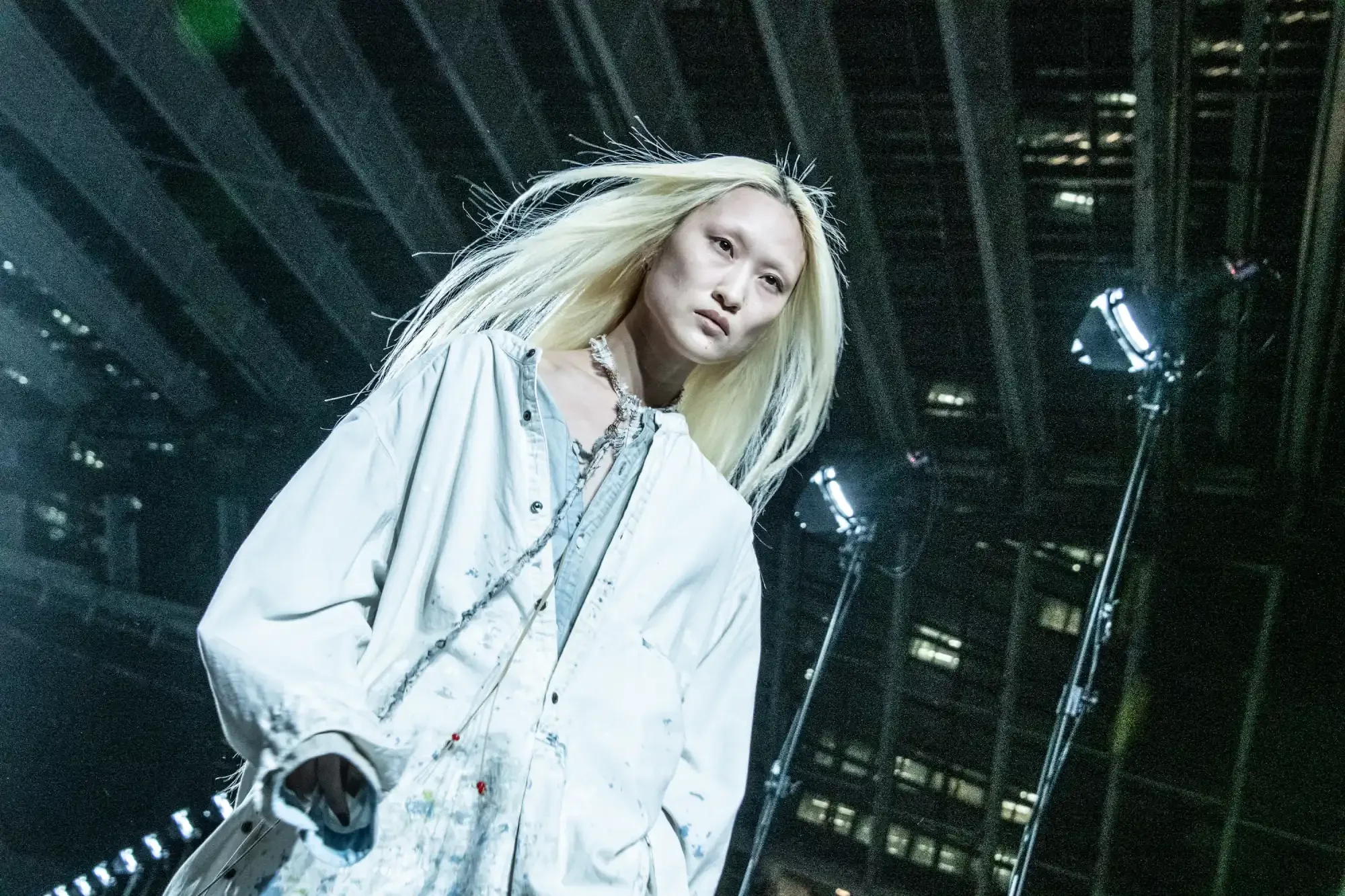
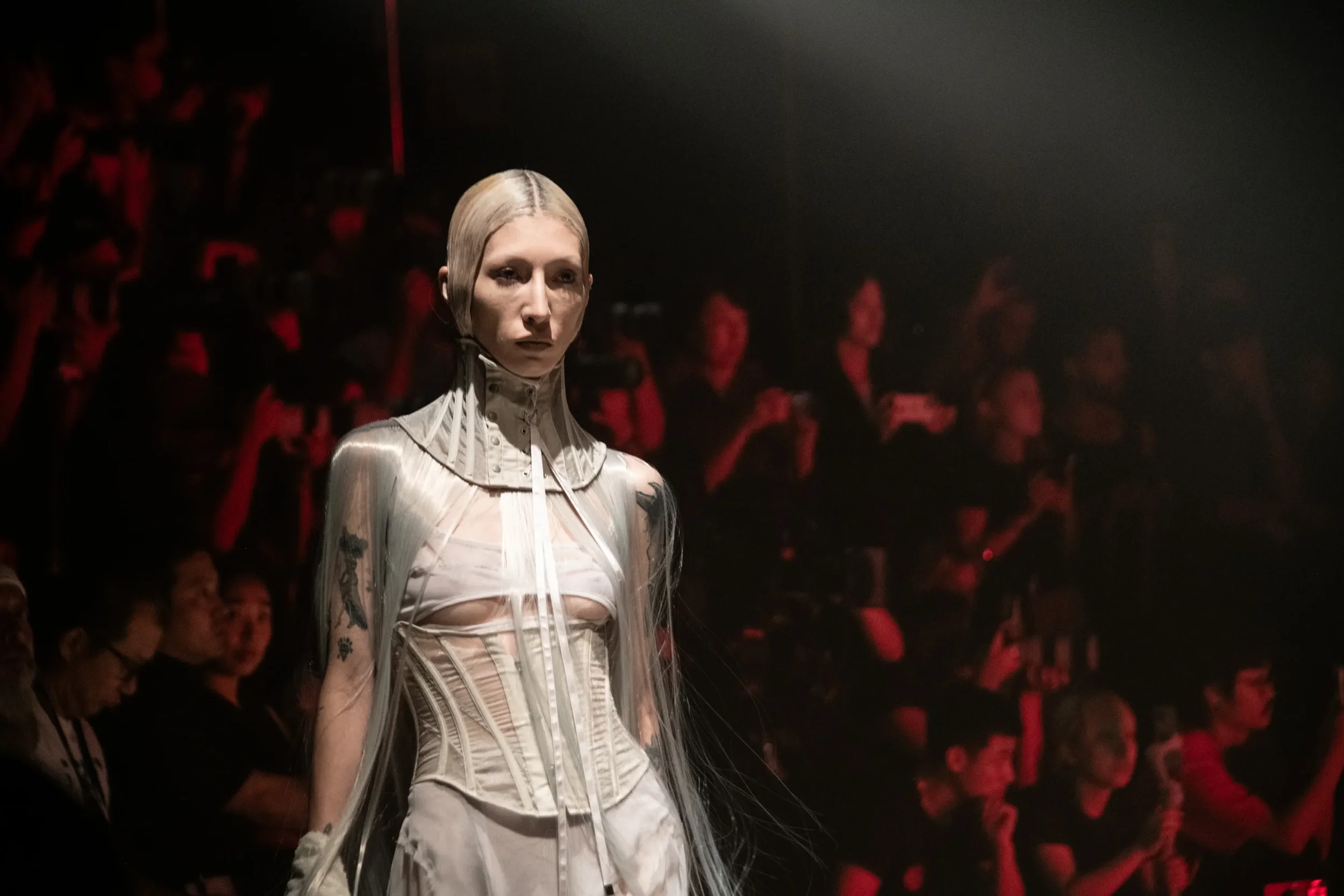
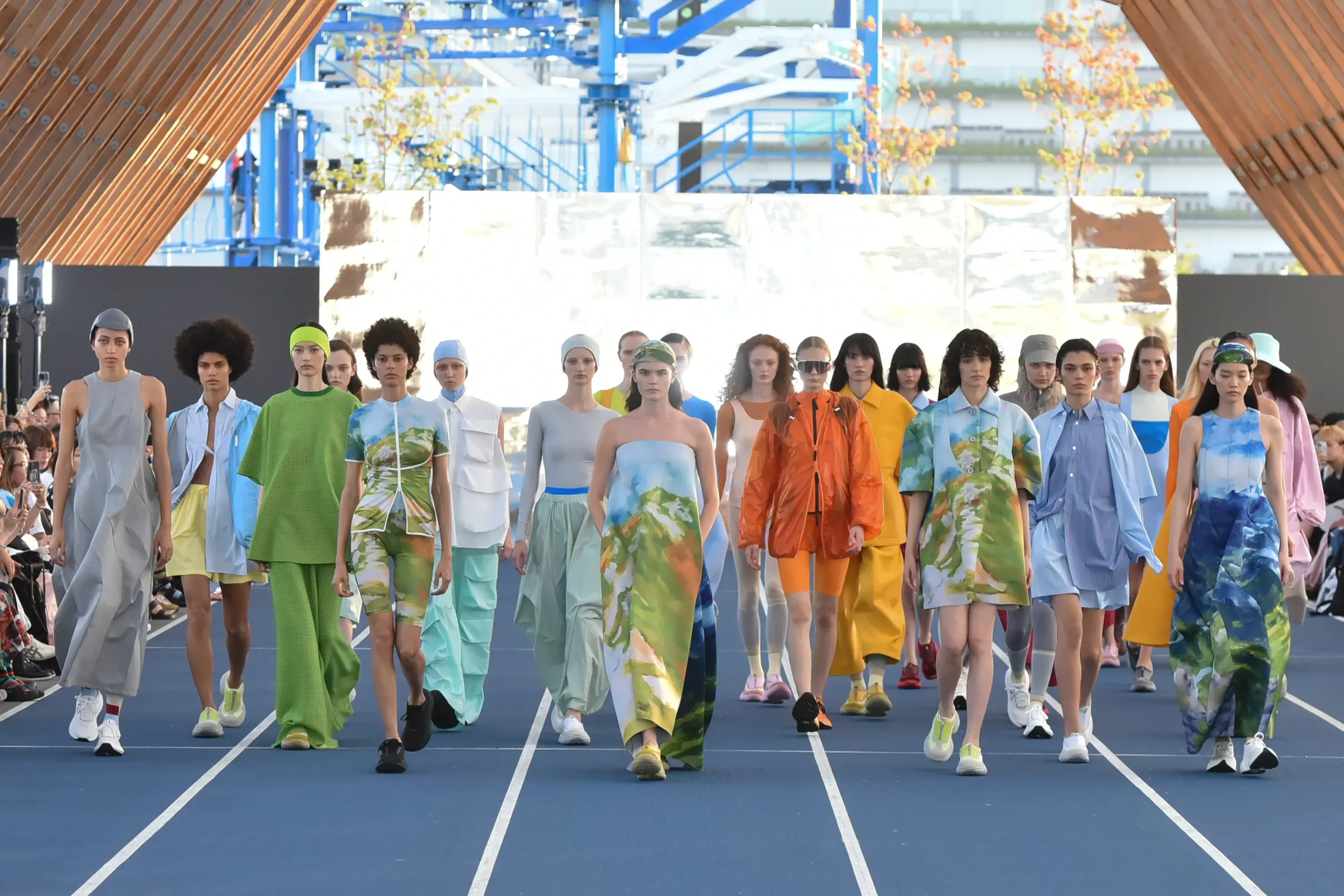
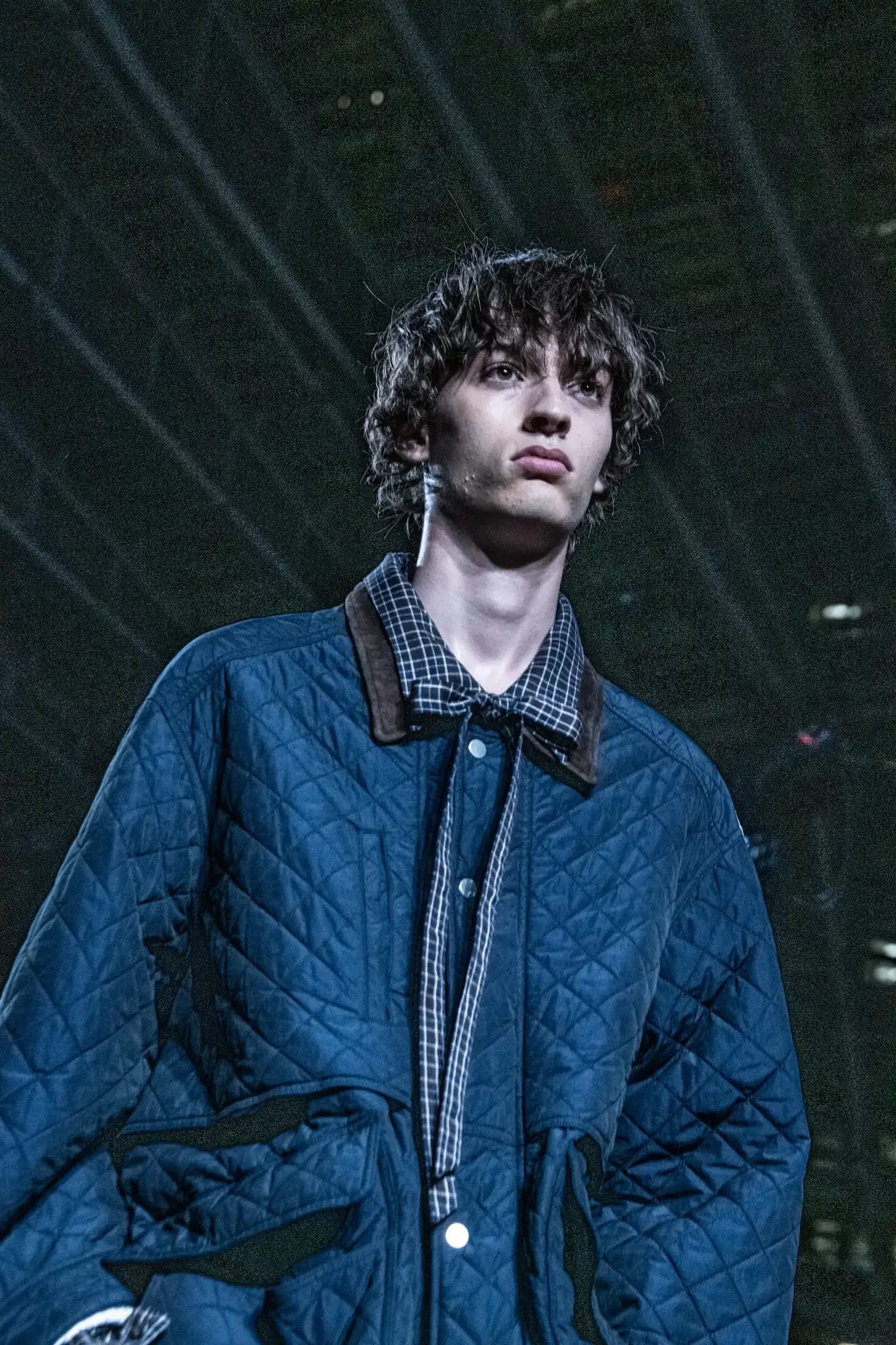
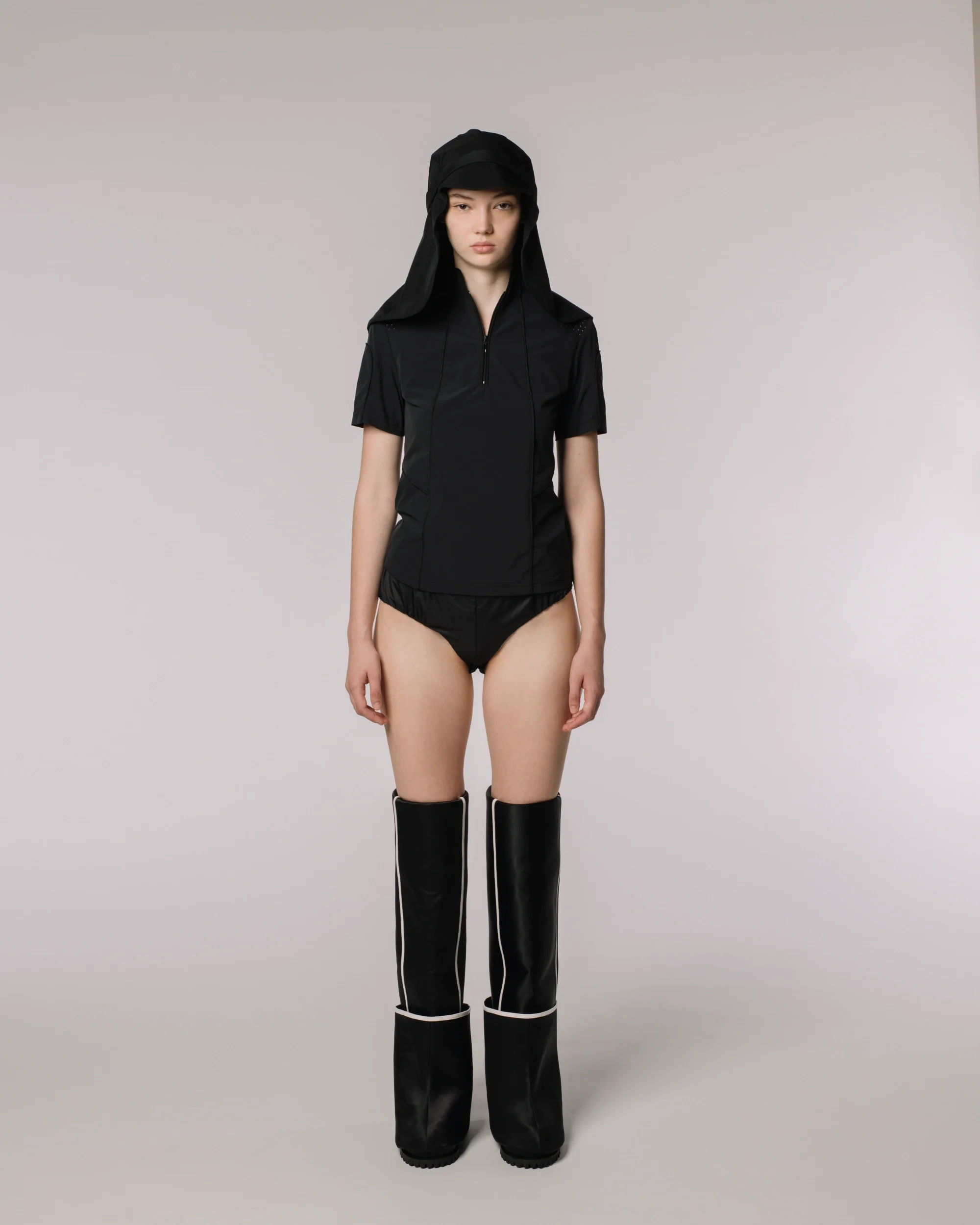
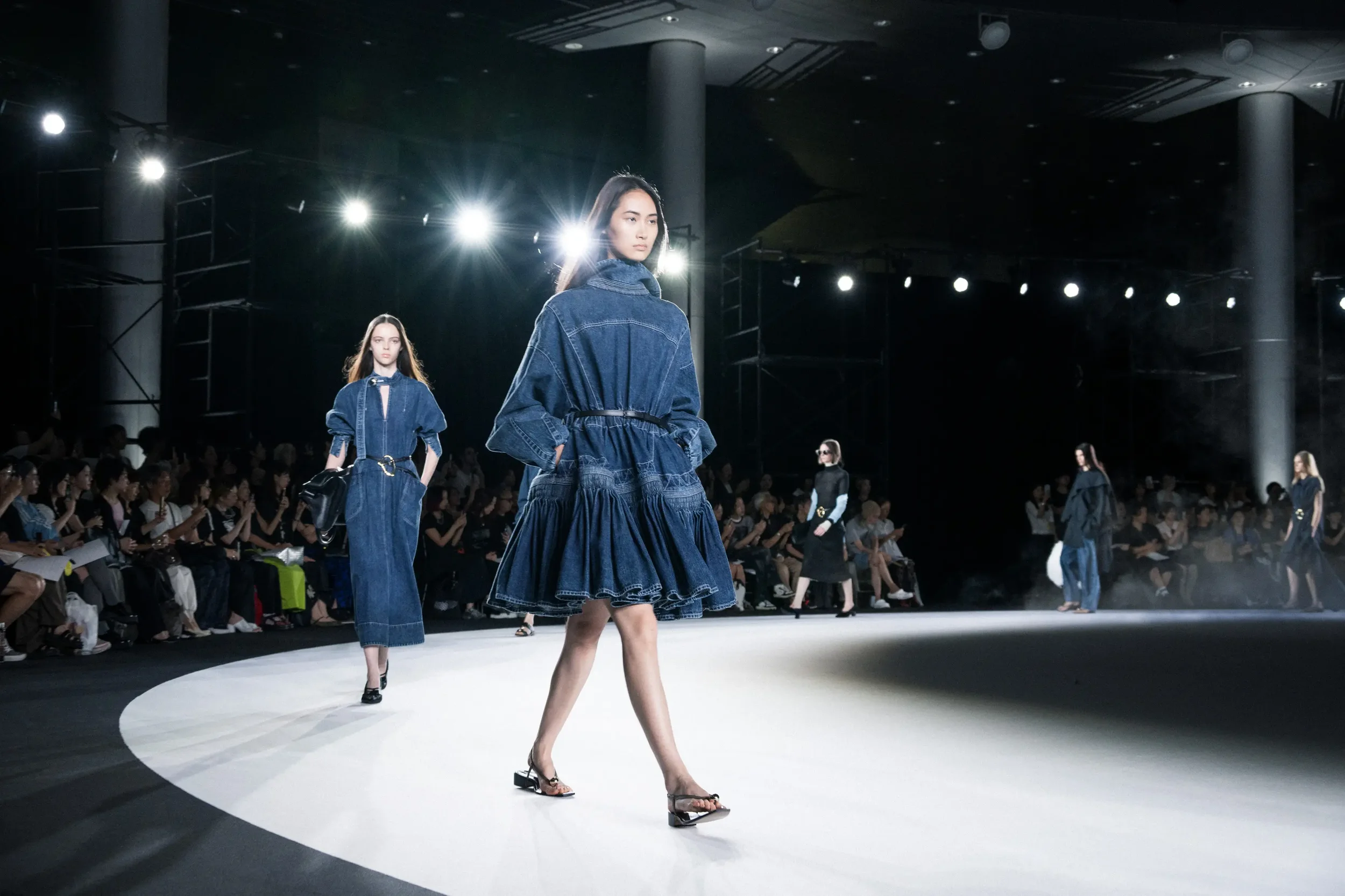
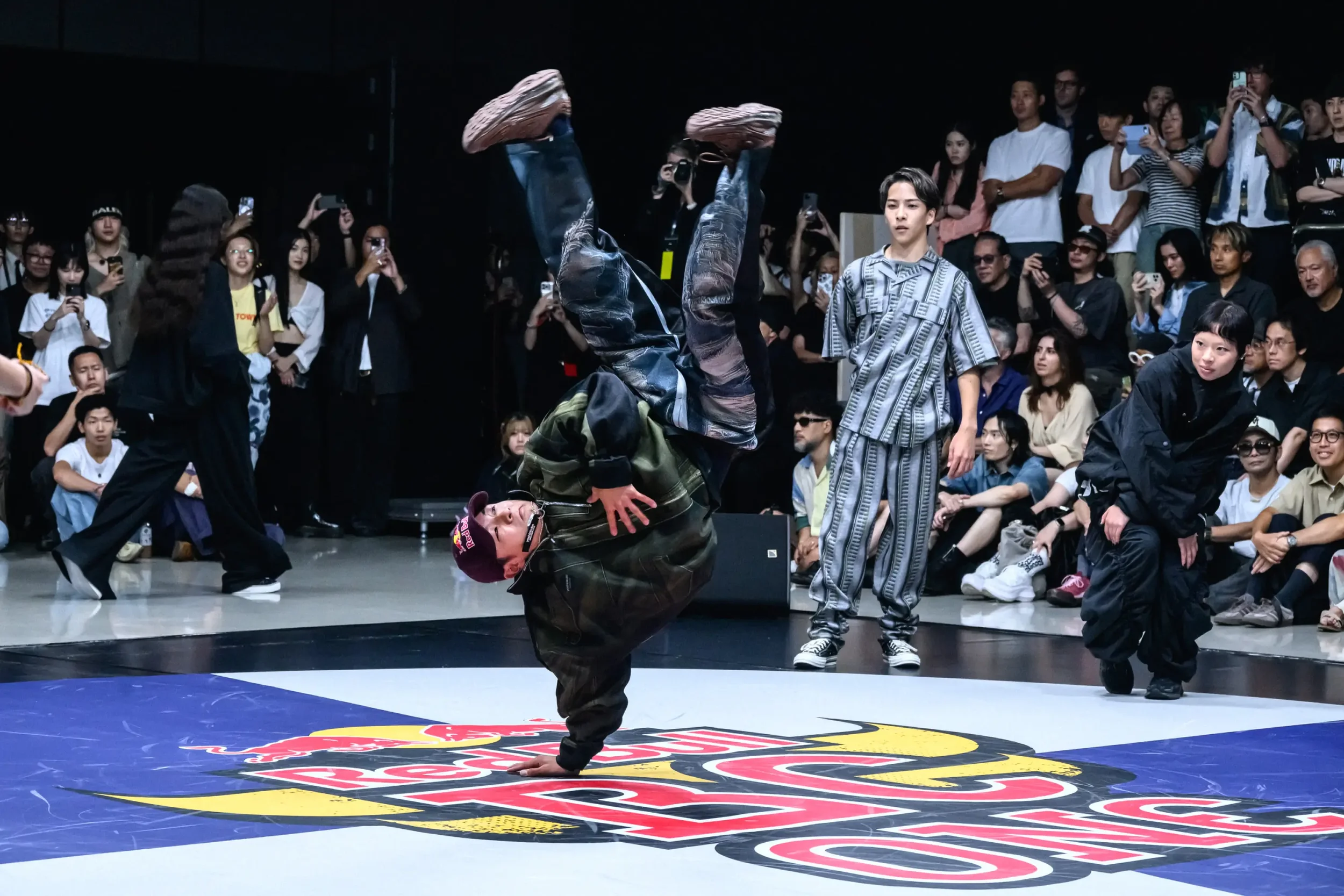
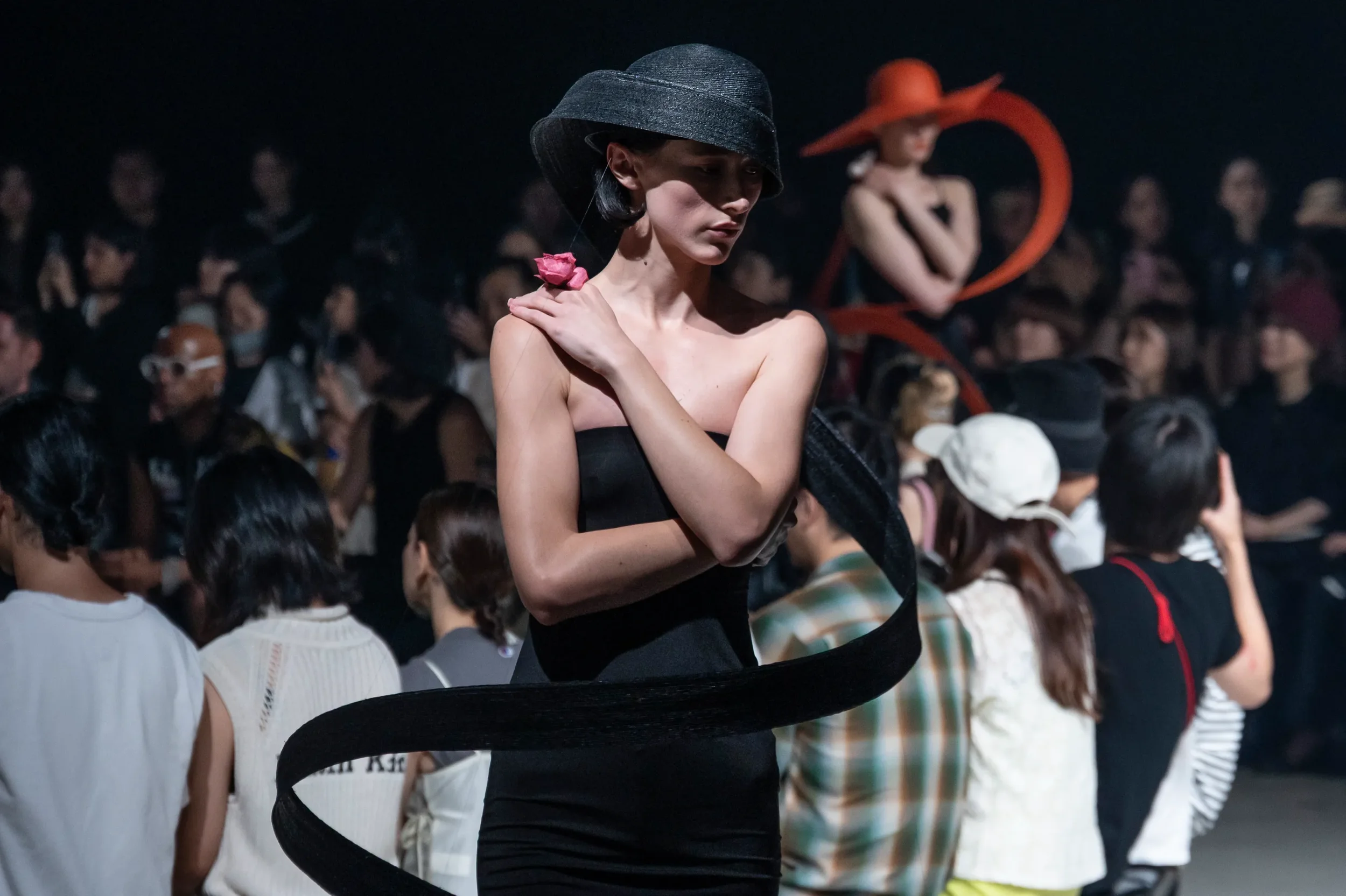
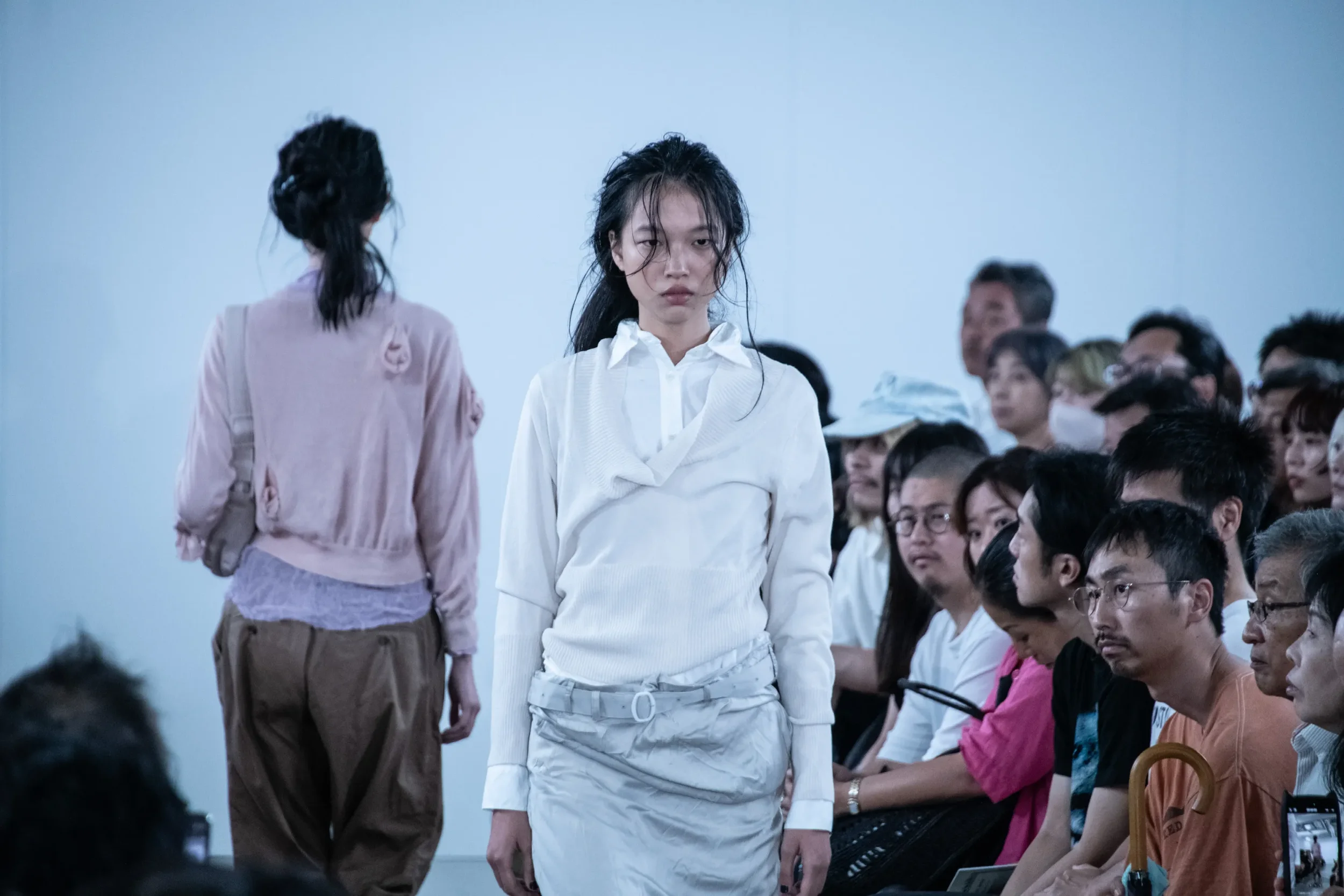
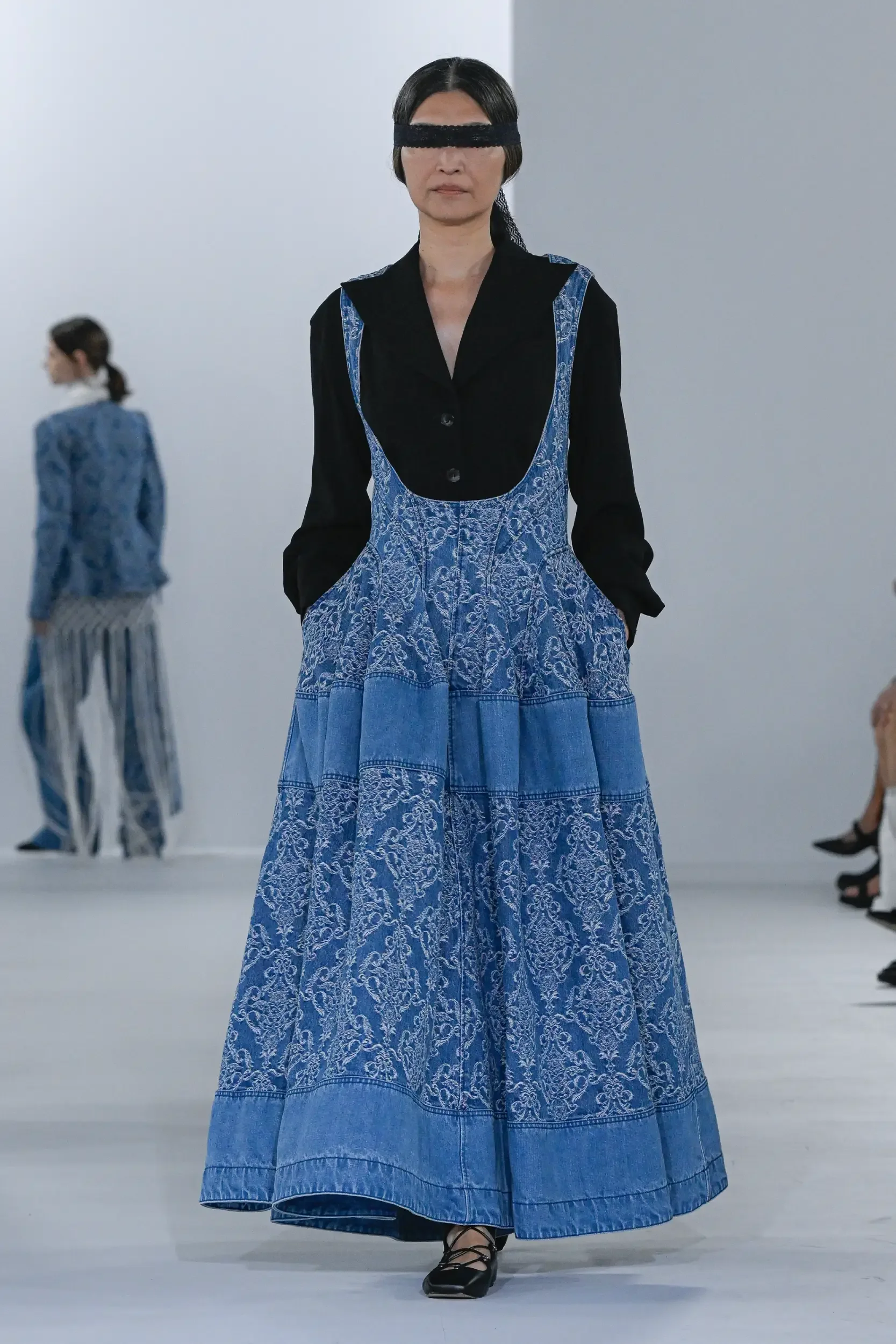



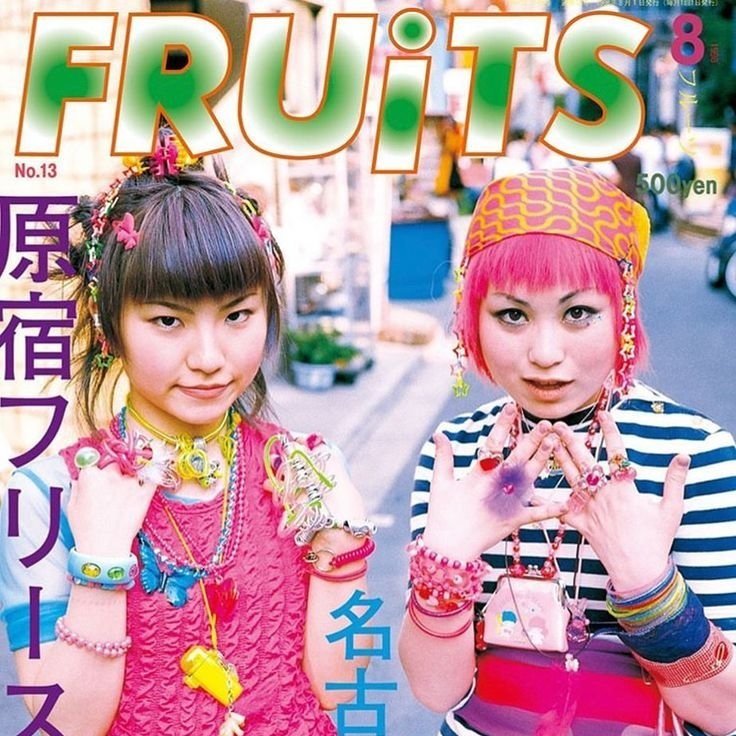
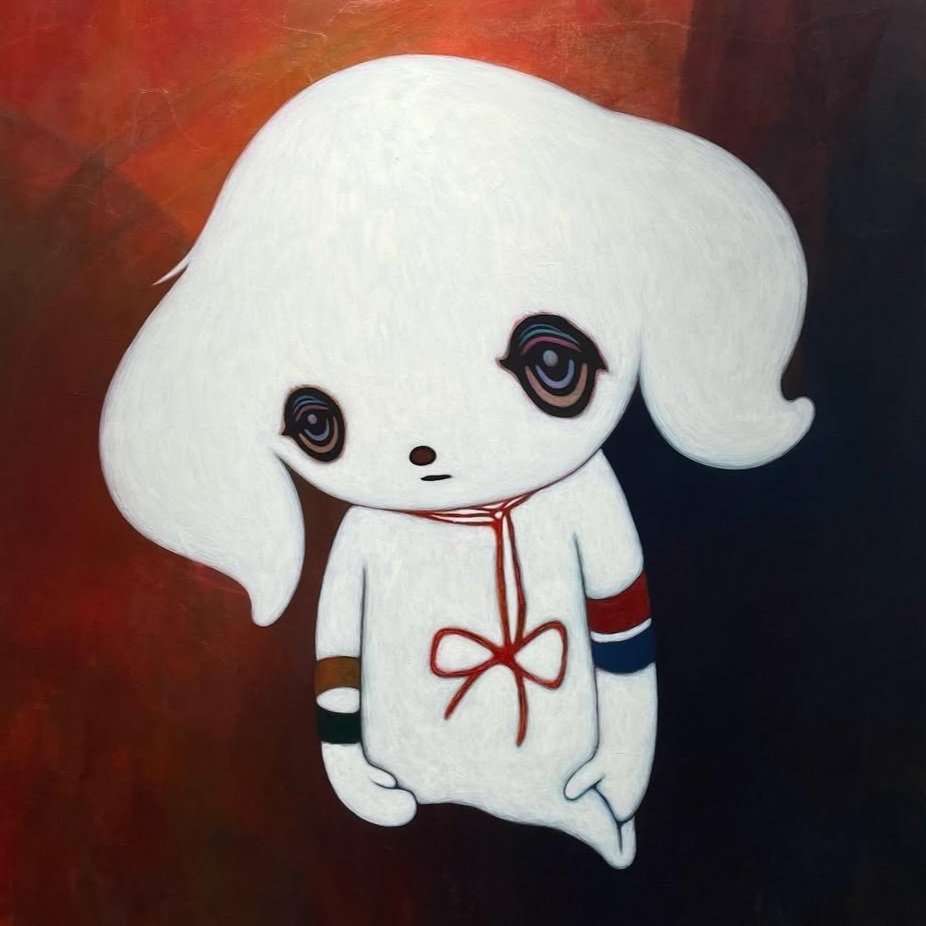
Wenders wanders a city racing forward, searching for Ozu’s stillness.